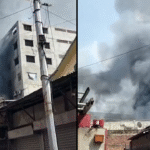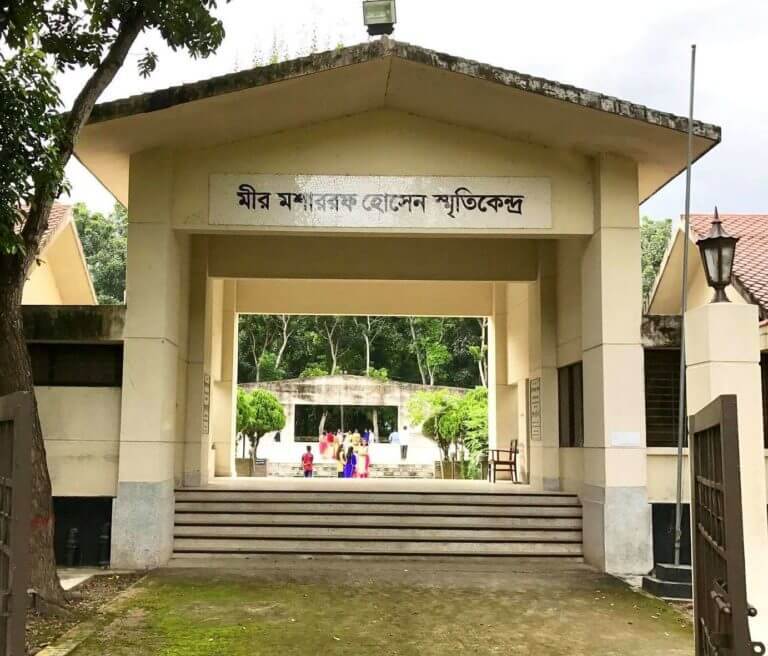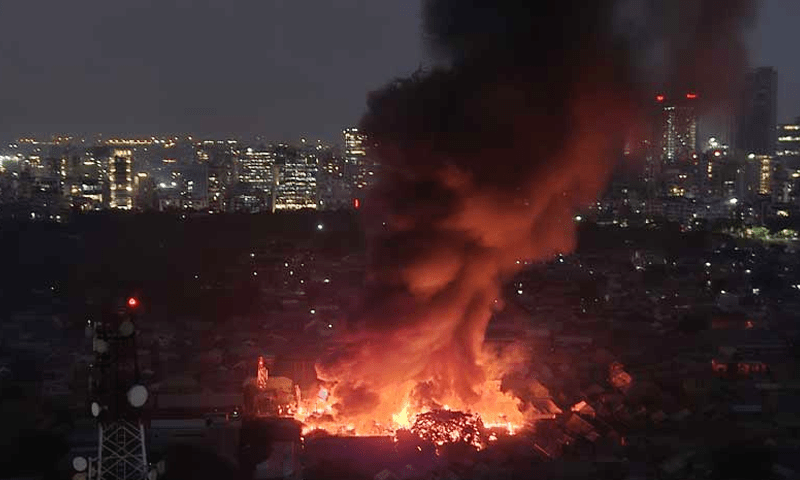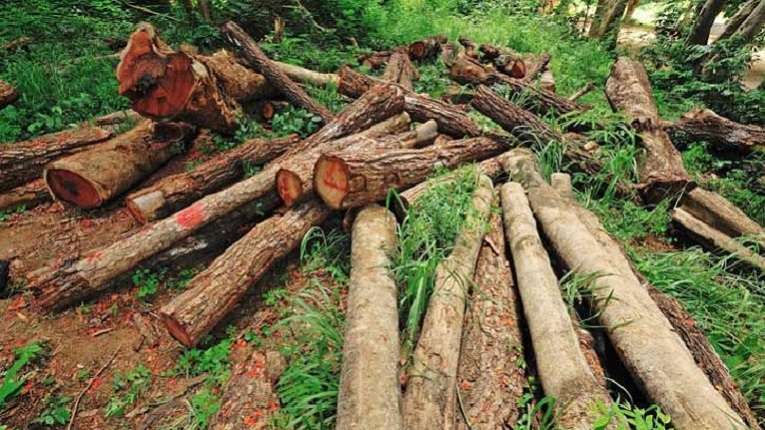Introduction to Mir Mosharraf Hossain’s Residence in Lahinipara-
Mir Mosharraf Hossain’s residence in Lahinipara is a significant cultural and historical site located in the Kushtia district of Bangladesh. This iconic homestead not only reflects the life of one of the most renowned literary figures in Bengali literature but also stands as a monument to his contributions. Known for his masterpiece Bishad Shindhu, Hossain’s works left an enduring mark on the cultural and intellectual history of Bengal.
Today, his home is a preserved museum that offers visitors a glimpse into the personal life and environment of the man who shaped the course of Bengali prose and drama in the 19th century.
Location and Accessibility-
Mir Mosharraf Hossain’s residence is situated in the serene village of Lahinipara in Kumarkhali Upazila, Kushtia. It lies approximately 20 kilometers from Kushtia town and can be easily accessed by local buses, auto-rickshaws, and private transport. The area is well-connected by road and offers a tranquil retreat for visitors.
GPS Coordinates:
Latitude: 23.9092° N
Longitude: 89.2496° E
Historical Background of the Residence-
The house was originally built in the early 19th century during the British colonial period. It served as the family estate of Mir Mosharraf Hossain, a zamindar (landlord) by heritage. Hossain was born in 1847 into an aristocratic family and grew up in this very house, which influenced much of his early education and literary inspiration.
As a hub of education, culture, and community gatherings, this residence hosted many important figures of the time. The historical architecture, along with furniture and artifacts still preserved here, brings to life the atmosphere of the Bengali Renaissance period.
Architectural Features-
The architectural style of Mir Mosharraf Hossain’s residence reflects a unique blend of Mughal and British colonial influences. The structure is built with red bricks, adorned with intricately carved wooden windows, and features a central courtyard. Key elements include:
- Large central hall for gatherings and literary discussions
- Traditional Bengali-style verandahs
- Private study room, where Hossain is believed to have written parts of Bishad Shindhu
- Antique furniture, household items, and manuscripts still displayed
The house is surrounded by lush greenery, offering a peaceful and reflective environment that aligns with the writer’s literary legacy.
Life and Legacy of Mir Mosharraf Hossain-
Mir Mosharraf Hossain is best remembered as one of the first major Muslim writers to contribute extensively to Bengali literature. His most celebrated work, Bishad Shindhu, is a tragic epic based on the martyrdom of Hasan and Husayn in Karbala. This novel remains a cornerstone of Bengali Muslim literary heritage.
Apart from Bishad Shindhu, Hossain wrote dramas such as Jamidar Darpan and many essays addressing social and political issues of his time. His writing style fused emotion with intellect, often challenging social injustices and religious prejudices.
The Lahinipara residence was more than a home; it was his intellectual sanctuary where much of his thought was nurtured and developed.
Transformation into a Museum-
In recognition of his monumental contribution to Bengali literature, the Government of Bangladesh declared Mir Mosharraf Hossain’s residence in Lahinipara a protected heritage site. In 1998, the site was renovated and turned into a museum.
The museum contains:
- Original manuscripts
- Personal belongings of Mir Mosharraf Hossain
- Photographs and paintings
- Historic documents and letters
- A library section with his literary works and research materials
The museum is managed by the Department of Archaeology under the Ministry of Cultural Affairs.
Cultural and Educational Importance-
Mir Mosharraf Hossain’s residence serves as a valuable resource for students, scholars, and literary enthusiasts. Many universities and cultural organizations arrange educational tours and seminars at the site.
Annually, literary festivals and cultural programs are held here in memory of Hossain’s legacy. These events help preserve the cultural fabric of Bangladesh and inspire the younger generation.
Visitor Information-
- Opening Hours: 9:00 AM to 5:00 PM (Closed on public holidays)
- Entry Fee: Free for all visitors
- Guided Tours: Available upon request for groups or institutions
- Facilities: Restrooms, Parking Area, Library Access
Visitors are encouraged to maintain silence and decorum within the premises to preserve the sanctity of the historical site.
Best Time to Visit-
The ideal time to visit Mir Mosharraf Hossain’s residence in Lahinipara is during the cooler months from November to February. During this period, the weather remains pleasant, making it comfortable to explore the outdoor and indoor areas of the homestead.
Additionally, if you visit in early November, you may witness the annual literary commemoration organized by local cultural bodies, which attracts scholars, artists, and history lovers from across the country.
Conclusion-
Mir Mosharraf Hossain’s residence in Lahinipara is more than just a relic of the past; it is a living testament to the intellectual and literary spirit of Bengal. It captures the essence of a time when literature was a powerful tool for social change and enlightenment. By visiting this residence, one not only pays homage to a great literary figure but also steps into a vital chapter of Bangladesh’s cultural history.
For anyone passionate about Bengali literature, heritage, or history, this site remains a must-visit destination. Its preserved beauty, historical depth, and educational value make it a jewel among literary landmarks in Bangladesh.
Frequently Asked Questions (FAQs)-
What is the significance of Mir Mosharraf Hossain’s residence in Lahinipara?
It was the childhood home and later residence of one of the most important Bengali Muslim writers, Mir Mosharraf Hossain. The house reflects his life, work, and the cultural context of the 19th century.
Where is Lahinipara located?
Lahinipara is located in Kumarkhali Upazila of Kushtia District, in western Bangladesh.
Is the residence open to the public?
Yes, the residence is open to visitors throughout the week except public holidays, with free entry.
What can be seen inside the museum?
Visitors can view original manuscripts, photographs, personal items, antique furniture, and other memorabilia belonging to Mir Mosharraf Hossain.
What is the best time to visit the residence?
The months from November to February offer the best weather for visiting. Special cultural events may occur in early November.
Are guided tours available?
Yes, guided tours can be arranged, especially for student groups or researchers interested in the life and works of Mir Mosharraf Hossain.
How can I reach Lahinipara from Kushtia town?
Lahinipara is around 20 km from Kushtia town and is accessible by local transport such as auto-rickshaws and buses.
Is photography allowed inside the residence?
Typically, photography is allowed for personal use, but flash photography or video recording may be restricted inside certain areas.
Are there any accommodations nearby?
While Lahinipara is a small village, visitors can find comfortable hotels and guesthouses in Kushtia town.














